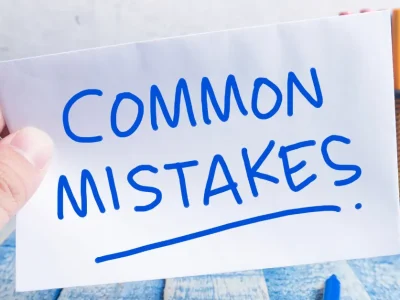Ernest Hemingway rewrote the ending of A Farewell to Arms 39 times. Now, we’re not telling you to revise your essay, memo, or brief 39 times. But we are here to tell you that the key to good writing is good rewriting. Taking the time to rethink, reorganize, and otherwise rework your documents will make them more readable, more persuasive, and generally more better (hmmm … maybe that last one could use some rewriting).
What is redrafting?
We’re sure you know this one, so we’ll be brief. Redrafting is the process of taking a fresh look at a previous draft of your document and revising it. It can involve any or all of the following:
- fine-tuning (or completely overhauling) your thesis
- reconsidering your arguments (do they make sense? are they consistent?)
- rethinking your evidence (and coming up with ways to bolster it)
- reorganizing your main points (or at least a few secondary ones)
Why is redrafting important?
This is another easy one (we’ll get to the less obvious stuff next). Redrafting is important because nobody (well, almost nobody) writes a perfect first draft. So it’s imperative that you perfect it the second time around. And if it takes a third or fourth draft, that’s fine too. Do whatever it takes to win your motion, draft a stellar memo, or—for now—ace the MEE and MPT portions of the bar exam. Redrafting is the way to make that happen!
How do I redraft?
We’re glad you asked! Without further ado, here are UWorld’s top 10 tips on how to redraft your documents like a Hemingway:
- Write a fat first draft: Yeah, we know this article is about redrafting. But the better your first draft, the better your second draft (and any later ones) will be. To make the most of your redrafting process, the best kind of draft is one with so much material that there’s plenty to choose from when it’s time to trim the fat. So let your initial draft be a stream of consciousness. Let it flow, and don’t revise it as you go or worry about form. Just get it on “paper.” And if you can’t decide between different words or phrases, put them all down (separated by slashes or “OR”s) for now. You can pick your favorite ones later while redrafting.
- Start your first draft early: Redrafting takes time—often more time than the initial draft (especially when you have to do multiple redrafts). Write your first draft as early as possible to help create that time and ensure that you’ll have some distance between drafts.
- Then wait a while: After finishing that early first draft, let it sit. Don’t start revising your draft right away. It’s still too familiar, and your brain is probably spent. Unless you have no choice (like, your paper is due in the morning or you’re sitting in an exam room), give yourself a few hours—or, better still, a few days—to clear your head. Then, come back to your document with a fresh set of eyes.
- Pick a medium: Decide what medium will help you revise most effectively. Many writers like to do their redrafts on their computers and type their revisions directly into the document. Others prefer to kick back with a printed copy they can mark up in red. Pick whichever method heightens your focus, maximizes your efficiency, and frees you to revise with purpose.
- Think big picture: Don’t think of redrafting as mere tweaking or rewording. Think of it as an opportunity to revisit the entire document—not just isolated words and sentences.
- Be unfaithful: When the redrafting process starts, don’t be wed to your initial draft. Otherwise, you’ll be hesitant to change it even if you know it’s just OK. Fickle writers are good writers.
- Be unemotional: That clever metaphor or witty anecdote you’re so proud of may be the very thing that’s disrupting the tone of your document or breaking the flow of your argument. In those situations, you need to be ruthless. You must be willing to sacrifice your favorite bits of writing for the good of the document as a whole.
- Have an open mind: If your first draft is unusually polished and organized, it may only require a few changes. But otherwise, you’ll want to critically review that draft with a willingness to restructure or rewrite it entirely if necessary.
- Move stuff around: Try looking at nothing but your paragraphs’ topic sentences. Do they follow a pattern that makes sense? If not, try shifting the order of your main points. And if that doesn’t do the trick, some sentence-shifting—or even some paragraph-cutting—may be in order.
- Track your changes: If you’re redrafting on your computer, be sure to use the “Track Changes” mode in Word or the “Suggesting” mode in Google Docs. It will allow you to compare your redraft with your initial draft, make changes without committing to them, and review all of your options on one “page.”
And for you overachievers (you know who you are), here are five additional tips:
- Be the audience: Imagine that you’re a reader looking at your document for the first time. (It might help if you read it aloud.) If you’re not persuaded (or, worse yet, if you’re bored or lost), it’s time for some significant redrafting. Your draft may need stronger transitions and/or punchier examples.
- Highlight the tough calls: Got commitment issues? Sometimes, there’s that one sentence, or even a whole paragraph, that you just can’t decide whether to keep or cut. Instead of endlessly dwelling on it, highlight it—say, green for a possible keeper, red for a likely deletion, and yellow for a toss-up—and plan to revisit it during your next redraft. It can be quite liberating!
- Do it again: Every once in a while, a single redraft will turn your initial draft into a masterpiece. But more often than not, you’ll need a second (or third) redraft to bring out your very best work.
- Consider an alternate version: If you kind of like your initial draft but are also considering a different approach (eg, new introduction and conclusion, reordering arguments), make your “redraft” a completely new draft. After you’ve written your latest draft, you can compare your old and new versions and see which one wins.
- Start from scratch if you have to: Sometimes, your first draft is practically unfixable. It can happen to anyone! In those cases, redrafting means round-filing that draft and starting over. Does that mean that much of your initial work was “wasted”? Perhaps. But isn’t a do-over better than failing an essay test or losing a motion?
And if you want to avoid a bar exam do-over, take a look at our expertly crafted explanations. Try UWorld’s MBE QBank 7-day free trial or purchase a subscription.




